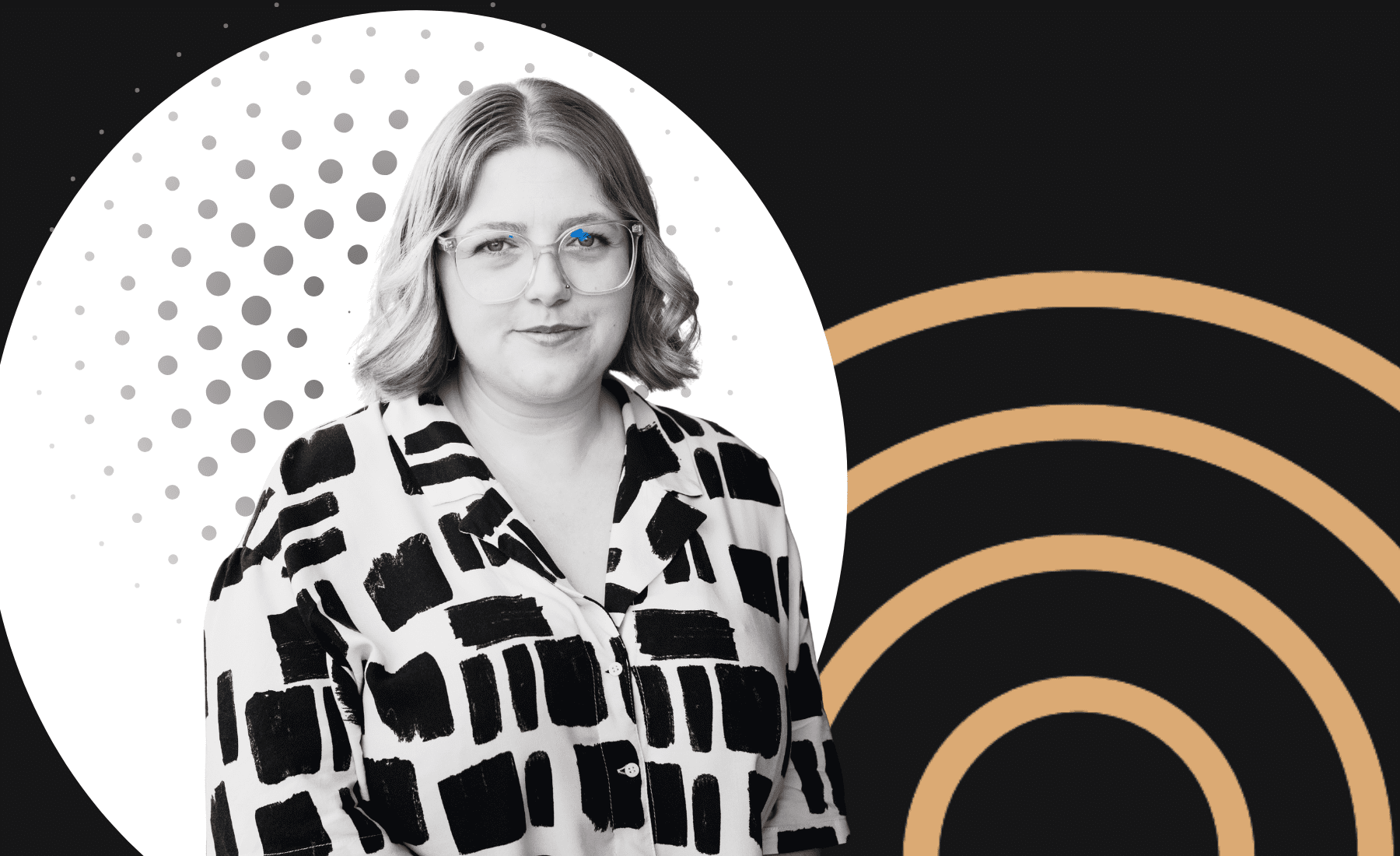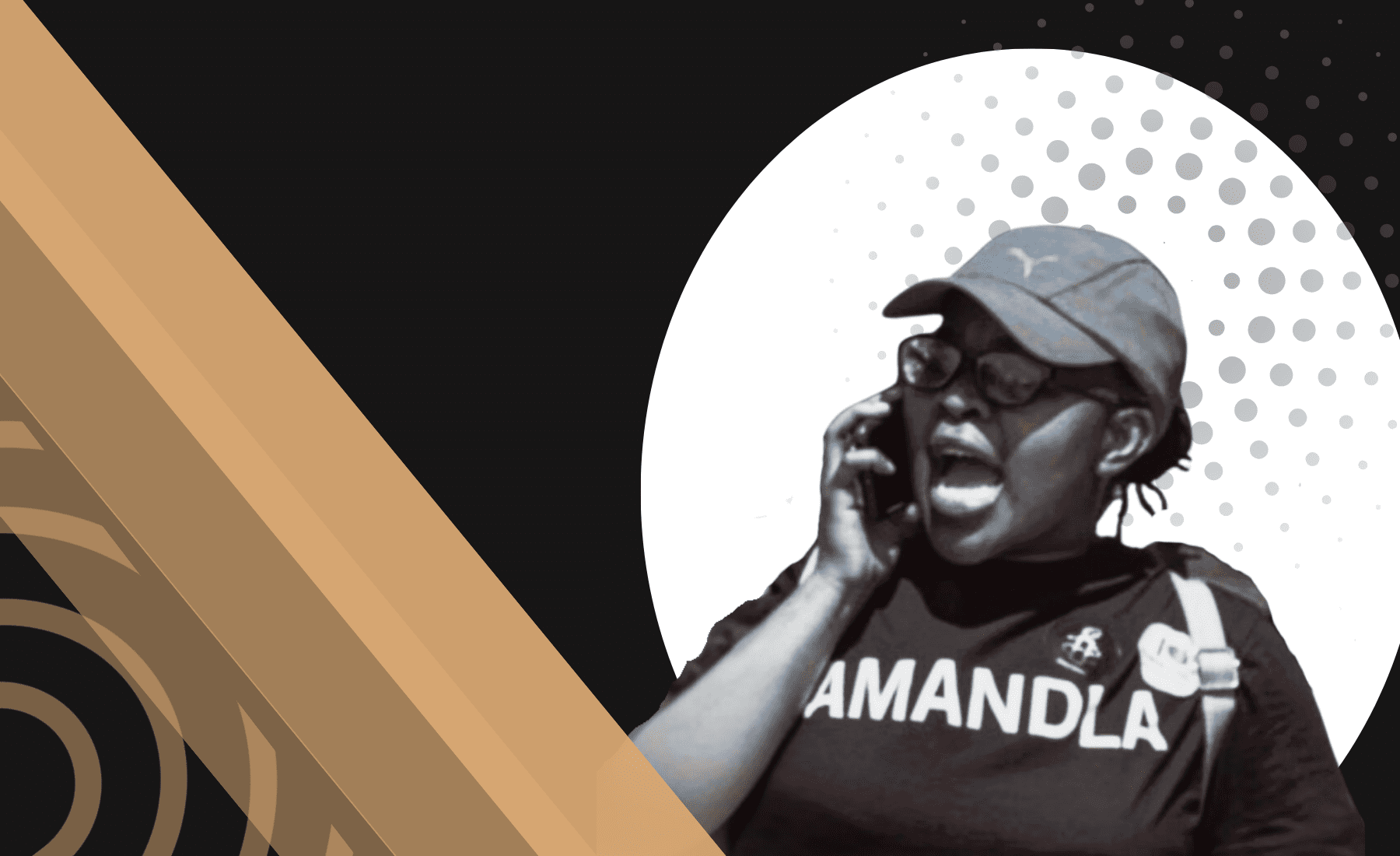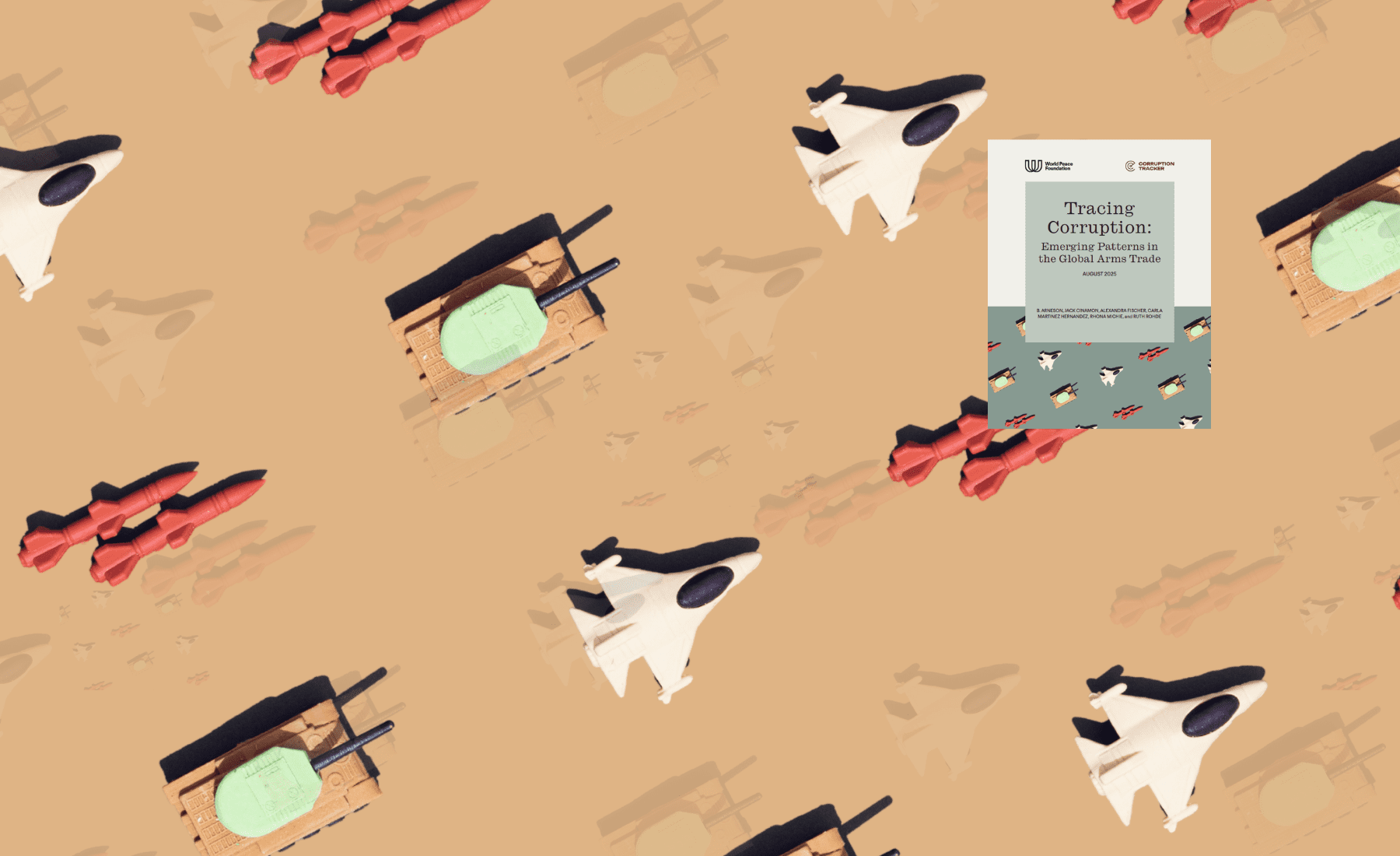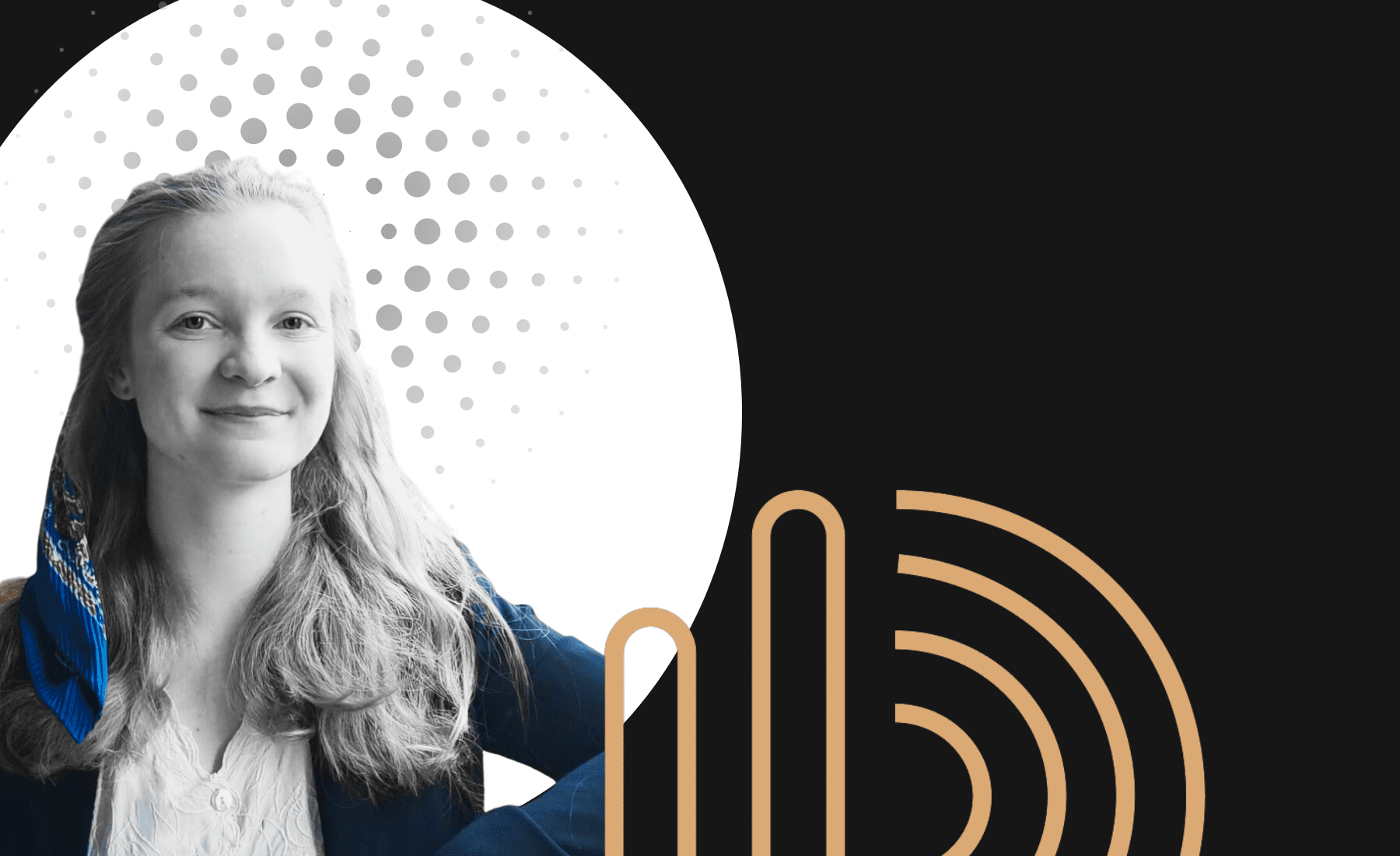In this interview, WPFs Research Director, Bridget Conley, talks with Rhona Michie, who works with our partner organization, the Corruption Tracker. Among her insights, Michie discusses how she sees the work of the CT as contributing not only documenting information, but also fueling anti-militarist activism and campaigns.
Bridget Conley: The Corruption Tracker [CT] is a woman and youth led project that seeks to delegitimize and dismantle the arms trade using the lens of corruption. It aims to collate document and expose information on corruption in the arms trade. By doing so, the CT hopes to be an invaluable and accessible resource for campaigners, journalists, human rights organizations and researchers working to dismantle the global arms trade. Rhona what is your role at the CT?
Rhona Michie: I am a co-Founder and Program Coordinator at the Corruption Tracker, and I help with the day to day running of the project. I’ve done bits and pieces of research in the past, and I’ve contributed to our report with the World Peace Foundation, but my main role is helping out where needed, coordinating some of the main programs, managing the finances, fundraising and the operational side.
Bridget: Can you talk about how you got started working with the CT, and if I understood correctly, it was through Shadow World Investigations [SWI], who, with the WPF and the RüstungsInformationsBüro (Arms Information Centre, Germany), sponsor the project. So, perhaps I should ask what drew you to work on these issues at all?
Rhona: I started working at Shadow World Investigations almost 7 years ago through contact with Paul Holden, Director of Investigations at SWI. I was fresh out of university, working in catering and volunteering with the Migrants Law Project which took strategic litigation cases around the right to family reunification.
I went to see the Shadow World documentary and started reading and so much fell into place, I remember seeing a graphic showing that the same arms companies profiting from war were getting border policing contracts to prevent people fleeing to safety. Andrew was taking the Shadow World on tour around the UK at the time and needed help with events coordination, and from there my role just kept growing. Months later we started talking with Ruth Rohde and Julia Auf dem Brinke, who’s now on the steering committee of the CT, about the information that we and other people in our networks had around corruption in the arms trade. We discussed how important it would be to have that coordinated in one space.
If you watch films like the Shadow World, if you do your research in the right places, the puzzle pieces start to come together about corruption in the arms trade, how pervasive it is and how it starts to infiltrate all different parts of society. But it’s really hard to have that overview of just how damaging it can be when the information is often not reported on. And when it is reported on, it’s spread out across reports in different languages, and in news outlets from different countries, sometimes behind paywalls. It can be really difficult to know where to start. We had a really strong sense that what was the WPF Compendium on Corruption in the Arms Trade — created by Sam Perlo-Freeman — was a really crucial project that could use some ongoing support to turn it into something much bigger. And that’s how the CT was founded.
Bridget: As you’ve been with the CT over time, you’ve coordinated the programs and do the administrative work, but you also have done a lot of substantive work. How have your concerns with the trade or the issues that most concern you changed over time?
Rhona: I have become a lot more skeptical around anti-corruption work in general. I’ve become a lot more cautious of how we talk about anti-corruption work, because there’s a real danger that the field of anti-corruption is used to predominantly focus on the global south, and that corruption is perceived as a governance problem that some countries just can’t quite get past. I don’t think I realized the extent that those presumptions had worked their way into the anti-corruption field. I naively thought that if we did the work in the right way, that our message would shine through. But we were challenged a few times by people saying, what do you do to push back against this? That is partly what inspired our report with WPF.
In our work we try not to lose sight of the role of the corrupter: the arms companies or private individuals that are that are pushing corruption as a business model. They’re using it to solidify their profits and their political power. That’s not to say that corrupted politicians and others who benefit aren’t playing their own role and getting their own private gain from it. But, the way that corruption has been systemically woven into policy and decision-making in our society is best highlighted by emphasizing the roles of the arms companies – taking a step back and looking at the data on the Corruption Tracker as a whole, and saying who is involved here? Because quite often there are imbalanced relationships, where you have Western arms companies based in Western countries, supported by Western taxpayer money, pedaling arms into any region of instability they can find — to both sides of a conflict, or to countries with no ongoing or even approaching conflict. Those deals militarize our societies, and corrupt them at the same time. It’s now become what I see as one of the fundamental roles of the Corruption Tracker — to expose those relationships.
Bridget: Has anything surprised you along the way? Were there any shocking stories, or does anything crack through and still have the capacity to make you be like, I can’t believe they did this…?
Rhona: I get surprised every day. I have been doing this now for almost seven years, and I certainly feel more cynical than I was when I started. But I still find every new report I read shocks me. Every new statistic I read shocks me. One of the things that has really stuck with me in the last year or so is the research that my colleague Jack Cinamon has been doing about price inflation. Stories about contractors charging the Pentagon $50,000 for a couple of trash cans. Those are still completely shocking to me. A lot of my work is focusing on the drive for militarization and increasing defense spending in the UK and the EU. In the light of all these stories about price inflation, those spending targets just feel like blank checks being offered to the arms industry. There’s often no competition over large defense contracts, and now governments are trying to spend more money. The research on the CT makes it clear that they’re not going to get any more value for that money. They’re going to get the same services with a bigger price tag attached to them.
Bridget: And at the same time, cutting all sorts of other programs that are dealing with real, every day human security parts of people’s lives.
Rhona: Yeah, pushing for warfare over welfare and sending money to be hoarded by individuals who already have more than you or I could spend in several thousands of lifetimes, while ordinary people are losing out.
Bridget: What would you like the impact of your work to be?
Rhona: I would like our work to be a platform that is not just providing information, but that can really be used as a tool to support a range of activism and campaigns. I would like to be able to increase concern about militarism and corruption in the arms trade on people’s agendas. I’d like it to be the back of the minds of people who are engaging on all kinds of different issues — in the same way we work in collaboration with other organizations, bringing, for example, environmental issues or borders and security issues into our work. I would like for the CT to be a tool that helps people talk about things they want to talk about. Even only if you’re around the dinner table and you’re talking to your family about the arm sales of your country, I want you to feel like you are empowered to have those difficult conversations. Or, on a bigger scale, to start difficult campaigns, because you have rigorous research that someone else has done that is easily accessible. That’s the impact I hope the CT can have for people.
Bridget: Rhona, this is a tough time for activists of all kinds, as we see governments swinging towards increased militarism and cracking down, not only on not advancing human rights issues, which I think we’ve seen for quite some time, like also making it harder for those who care about these issues to advance protection agendas and human security interest. What keeps you motivated to keep working in this field?
Rhona: My honest answer to that is, the root of hope and the root of motivation is taking action. Being around people who understand it, whether that’s in demonstrations in the streets or in community with other people who care about the same issues. I tell people who feel anxious about the world and feel like whatever they do is not going to make a difference, that one day of getting up and going to a protest for an hour, for 90 minutes on something that they care about is the most invigorating thing you can do. You are surrounded by people who understand what you feel, and are showing solidarity.
In the War Remnants Museum in Vietnam, they have a whole room dedicated to the protests that were happening around the world against the Vietnam War. They have all these photos from protests and the flags of countries that stood in solidarity with them. The whole message of that room is, thank you, because we heard of these protests, and it kept us going. Knowing that someone in in Yemen or in Gaza or the Congo could hear about the work that we’re doing, and be reminded that the world hasn’t forgotten them, is really crucial.
Bridget: My last question is, the CT is a youth and women led organization, so how do these two traits influence the way the CT works?
Rhona: When we started, there was a feeling of throwing away the rule book and working out from scratch how we wanted to work together as a team. From the beginning, we knew that we wanted to emphasize that working as a team of young people, especially on issues that are so challenging, can take a toll. We really wanted to build a community — not like a ‘we’re all family in this corporate workplace’ community – but one that put the health of its staff first. Putting aside time aside to do exactly what I talked about earlier – to create a community that keeps you hopeful, and to hold space for each person. I think that that’s allowed us to take the parts of the working world that work for us and shed the ones that don’t.
For example, we keep hierarchy when it comes to accountability and working out who can be there to support the team. But in all other ways, like our strategy, our formation of cases, our formation of ongoing projects, decisions are made as a team. You’re a member of our team, whether you’re a volunteer doing occasional research when you can alongside your studies, or if you’re working regular hours. You’re coming together and contributing to the vision of the Corruption Tracker. That has made our work so much richer, because having a team of people from different countries and different work and study backgrounds allows everyone to bring something fresh. I feel really positive about our approach. And, working with women is the best.
Bridget: That’s a beautiful answer. Within the community-building of the organization and through the common concerns that holds the organization together, everybody has something distinct that’s valuable to add.
Rhona: Absolutely.
Bridget: Rhona, thank you so much for your time and insights.
Rhona: You’re welcome, thanks Bridget.
Learn more about our program on Tracking Corruption in the Arms Trade.



